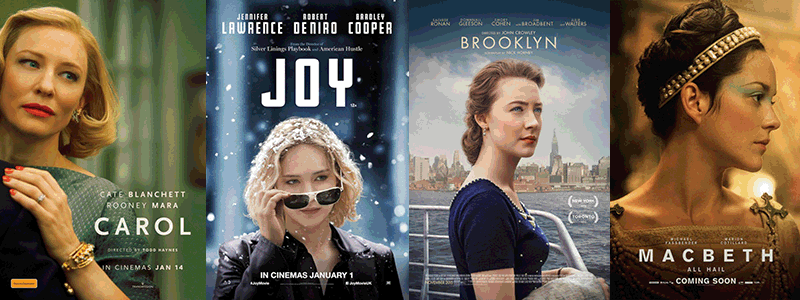“The Hateful Eight” - Quentin Tarantino’s penchant for violence in his films is well known (starting with “Reservoir Dogs”), and if you’re looking for that you won’t be disappointed by this film, although you'll have to wait a bit. Strangely, Tarantino decided to make this film in Ultra Panavision 70mm, which makes it ultra-wide and perfect for beautiful scenery. Unfortunately, only a small part of the film takes place outdoors in the beautiful scenery, with the rest inside a wood frame building in the middle of a Wyoming blizzard. As the film opens, we see a stagecoach driving through the snow only to be halted by a man standing in the snow with a few dead bodies at his feet. We soon learn that on board the coach is a bounty hunter named John Ruth (Kurt Russell) with his bounty, a killer known as Daisy Domergue (Jennifer Jason Leigh), and they are headed for Red Rocks where Daisy will hang and Ruth will earn a small fortune as a result. The man in the snow is another bounty hunter, Major Marquis Warren (Samuel L. Jackson), who, after convincing Ruth that he’s okay, soon joins them on their journey toward Red Rocks. But before they ever get to Red Rocks, they find themselves, along with another snowbound rider, Chris Mannix (Walton Goggins), soon to be sheriff of Red Rocks, at a stop along the coach route known as Minnie’s Haberdashery. And there begins the mystery, as inside this godforsaken place in the Wyoming wilderness are a group of very dubious characters, including a former confederate general, Sandy Smithers (Bruce Dern), a hangman (Tim Roth), a Mexican (Demian Bichir), and a cowboy, Joe Gage (Michael Madsen). And there are a few other characters thrown in for good measure (including one played by Channing Tatum). When an attempt is made on the lives of those present, “The Hateful Eight” turns into an Agatha Christie mystery of sorts with Samuel L. Jackson symbolically playing the detective role. Needless to say, however, things deteriorate. Tarantino’s concept is interesting and original and the performances are dead-on, literally and figuratively. However, the film runs close to three hours and drags, especially at the beginning. The introduction is very slow and verbal, with most of the action occurring in the last hour. Tarantino obviously, as noted, is obsessed with violence and it’s hard to tell whether the is trying to make a point or just enjoys having his characters get knocked off in as violent a fashion as possible. B (4/18/16) | |





























